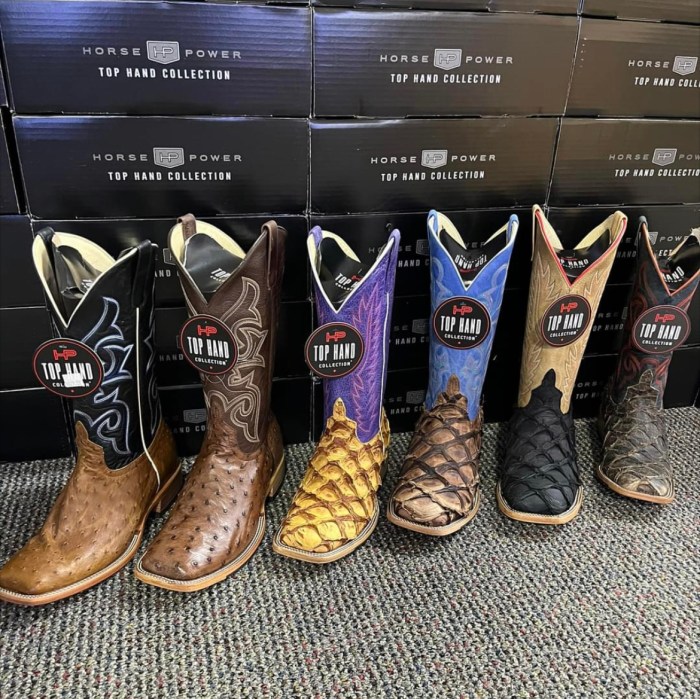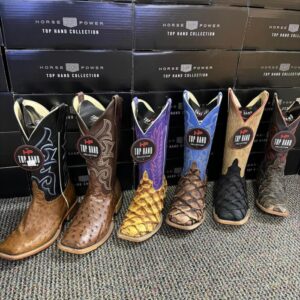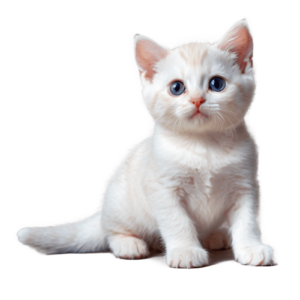
Western boots are more than just footwear; they embody a rich tapestry of American history and culture. From their rugged beginnings as work boots for cowboys to their status as a fashion statement today, these boots have traveled a long road. With distinctive features like pointed toes, intricate stitching, and a high shaft, Western boots stand out in the footwear world, offering various styles that cater to both function and flair.
Whether you’re drawn to the classic cowboy style, the trendy fashion-forward designs, or the practical options for work, there’s a pair of Western boots for everyone. Understanding their craftsmanship and the industry behind them adds another layer of appreciation for these iconic shoes.
Overview of Western Boots

Western boots have played a pivotal role in shaping the cultural identity of the American West. Originating in the early 19th century, these boots were initially designed for practical use by cowboys, ranchers, and farmers. Over time, they have evolved into a symbol of rugged individualism and Western heritage, influencing fashion trends beyond their utilitarian beginnings. They reflect a lifestyle that values independence, adventure, and a connection to the land.The key features of Western boots that set them apart from other types of footwear include their high shaft, pointed toe, and distinctive heel design.
Unlike typical shoes, Western boots are made from durable leather, often adorned with intricate stitching and decorative elements that showcase craftsmanship. The unique heel elevates the wearer and provides stability in the stirrup, making them ideal for horseback riding.
Styles and Designs of Western Boots
Western boots come in a variety of styles and designs, catering to both functionality and fashion. Understanding these variations can assist buyers in choosing the right pair for their needs. Below are some popular styles of Western boots:
- Riding Boots: Characterized by a tall shaft and a higher heel, these boots are specifically designed for horseback riding, providing support and comfort during long hours in the saddle.
- Fashion Boots: These boots prioritize style and are often embellished with colorful patterns or unique materials. They may include features like exotic leathers or modern designs that appeal to fashion enthusiasts.
- Work Boots: Built for durability, these boots are often reinforced at the toe and heel, making them suitable for rugged outdoor work. They typically have a lower heel for increased stability.
- Short Boots: Also known as ankle boots, these variations offer a more casual look while maintaining the classic Western boot aesthetic. They are often easier to pair with various outfits.
Additionally, the aesthetic appeal of Western boots can be enhanced through various materials and designs. For instance, some boots feature exotic leathers like ostrich or snake, which add a luxurious touch. Others may incorporate intricate tooling or embroidery, showcasing the artistry involved in their creation.
Western boots are not just footwear; they are a statement of style, history, and lifestyle.
Employment and Work in the Western Boots Industry

The Western boots industry offers a range of career opportunities that play a crucial role in the production and distribution of these iconic footwear items. From manufacturing to sales, each position contributes to the overall success and craftsmanship of Western boots. As a traditional craft, this industry combines modern techniques with age-old skills, making it an interesting field for those looking to work in a unique and culturally significant area.
Job Roles in the Manufacturing of Western Boots
The manufacturing of Western boots encompasses various job roles, each essential to creating the final product. The following positions are commonly found in this industry, highlighting the diverse skill sets required:
- Designers: Responsible for creating the initial designs and styles of the boots, taking into consideration both functionality and aesthetic appeal.
- Pattern Makers: Create templates for each part of the boot, ensuring proper fit and style continuity.
- Shoe Construction Workers: Skilled laborers who assemble the boots by cutting leather, stitching, and attaching components like soles and heels.
- Quality Control Inspectors: Ensure that each pair of boots meets the brand’s quality standards, checking for defects and overall craftsmanship.
- Finishers: Add the final touches to the boots, such as polishing and applying protective coatings, enhancing both look and durability.
- Sales Representatives: Serve as the link between manufacturers and retailers, assisting in the marketing and distribution of the boots.
Importance of Skilled Craftsmanship
Craftsmanship is vital in the Western boots industry, contributing significantly to the quality and durability of the footwear. Skilled artisans bring years of experience, ensuring that each pair of boots is not only functional but also tells a story through its design and construction.
“The quality of a Western boot is directly tied to the craftsmanship behind it; each stitch represents dedication and skill.”
The focus on craftsmanship means that many boots are handmade, often featuring intricate detailing and high-quality materials that mass-produced alternatives lack. This commitment to quality results in boots that can last for years, reflecting the tradition of Western boot-making.
Supply Chain and Distribution Channels for Western Boots
The supply chain in the Western boots industry is complex, involving several stages from raw material sourcing to final sales. Understanding this supply chain is essential for those working in or entering the industry.The process generally includes:
- Raw Material Suppliers: Provide high-quality leather and other materials essential for boot production.
- Manufacturers: Produce the boots, often using a mix of traditional craftsmanship and modern technology to meet demand.
- Distributors: Serve as intermediaries, getting the boots from manufacturers to retailers, and sometimes directly to consumers.
- Retailers: Sell the boots in physical stores or online, providing customers with access to various brands and styles.
- Customer Feedback Channels: Allow retailers and manufacturers to understand consumer preferences and adjust production accordingly.
The distribution channels have evolved, with online retailing growing significantly, making Western boots more accessible to a global audience. This shift has led to increased competition but also greater opportunities for small and artisanal brands that emphasize quality and unique designs.
Trends in Western Boots and Related Industries
The world of Western boots is constantly evolving, influenced by a blend of fashion, materials, marketing, and cultural shifts. Understanding these trends provides insight into how the industry adapts to both consumer preferences and broader fashion movements. The significance of these trends not only reflects current styles but also shapes the future of Western footwear, making it essential for both consumers and manufacturers to stay informed.
Impact of Fashion Trends on the Western Boots Market
Fashion trends play a crucial role in shaping the Western boots market, as they dictate consumer preferences and purchasing behaviors. Designers often draw inspiration from various sources, including runways, celebrities, and social media influencers, leading to an increased demand for styles that align with contemporary tastes. The rise of the “Western chic” trend has seen traditional designs reimagined with modern twists, integrating vibrant colors, unique patterns, and innovative silhouettes.
The following aspects highlight how fashion trends influence the Western boots market:
- Adaptation to Streetwear: Western boots are increasingly being paired with casual streetwear, blurring the lines between traditional cowboy aesthetics and modern urban fashion.
- Seasonal Collections: Brands are launching seasonal collections that reflect current fashion trends, resulting in limited-edition boots that create urgency and exclusivity.
- Celebrity Endorsements: High-profile endorsements have led to spikes in sales, showcasing how visibility in fashion media can drive consumer interest.
Comparison of Materials Used in Western Boots with Other Industries
Materials have a significant impact on the quality, durability, and style of Western boots, differentiating them from other footwear and clothing industries. While leather remains the traditional choice for Western boots due to its durability and classic appeal, innovations in materials are becoming more prevalent.The following list compares the materials commonly used in Western boots with those in other clothing and shoe industries:
- Leather: The primary material for Western boots, known for its longevity and ability to mold to the wearer’s foot. In contrast, many athletic shoes primarily use synthetic materials for lightweight and breathable qualities.
- Suede: Often used in upscale Western boots, it offers a soft texture and aesthetic appeal. In casual footwear, suede has also gained popularity but lacks the durability of traditional leather.
- Eco-friendly Materials: With the rise of sustainability, there is an increasing number of Western boot brands experimenting with vegan leathers and recycled materials, setting them apart from industries that have been slower to adopt eco-conscious practices.
Role of Marketing and Advertising in Promoting Western Boots
Effective marketing and advertising are vital for the promotion of Western boots, as they help brand positioning and consumer engagement within the textile and apparel sectors. The competitive landscape requires brands to utilize innovative strategies to attract buyers.Several marketing strategies have proven effective in elevating Western boot brands:
- Social Media Campaigns: Platforms like Instagram and TikTok provide a space for brands to showcase their latest styles through engaging content, often featuring user-generated content to enhance authenticity.
- Collaborations: Collaborations with fashion designers or popular influencers can increase brand visibility and appeal to a broader audience.
- Experiential Marketing: Brands are utilizing pop-up events and immersive experiences that allow consumers to engage with the brand directly, creating memorable connections that increase brand loyalty.
“Fashion is not just about clothing; it’s about the story you tell through what you wear.”
Final Review
In summary, Western boots are not just a popular fashion accessory; they encapsulate a significant aspect of American heritage while showcasing skilled craftsmanship. As trends evolve, these boots continue to adapt, proving that they are here to stay. From the production process to the various styles available, the world of Western boots is as vibrant and diverse as the people who wear them.
Essential FAQs
What are the key features of Western boots?
Key features include pointed toes, high shafts, decorative stitching, and often a stacked heel, all designed for style and functionality.
How should Western boots fit?
Western boots should fit snugly without pinching, with enough room to allow for some movement. They should feel comfortable right away, as they may not stretch significantly.
Can Western boots be worn in the rain?
While some Western boots are made from water-resistant materials, it’s best to avoid heavy rain, as water can damage leather and other materials.
How do I care for my Western boots?
Regularly clean them with a soft brush, use appropriate leather conditioner, and store them in a cool, dry place to maintain their shape and longevity.
Are there different types of Western boot styles?
Yes, there are several styles, including traditional cowboy boots, roper boots, square-toed boots, and fashion-forward designs, each catering to different tastes and uses.





